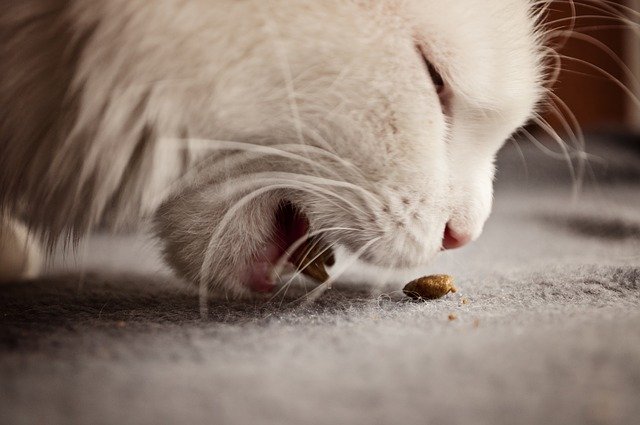Congratulations! You’ve decided to give a cat a forever home. There’s much to know when welcoming a new cat into your family, but don’t worry! Whether this is your first cat, a second cat, or even tenth cat, this guide will help you learn or remember the most important pieces to welcoming a new cat into your home.
Before welcoming a new cat, try and decide what age cat will be right for your family. While every cat has a personality all their own, at each of their different life stages, they need different care. While love, toys, and food are a must at every stage in a cat’s life, their needs, both physical and mental, change from kittenhood to senior status. Research requirements for kittens, adult, and senior cats to see who will fit best with your family. Also, cats with special needs are always in need of homes, and maybe you have the right home to keep a cat with a disability comfy.
Don’t forget to take any animals already at home into account. Be sure your furry family member will be accepting of a new cat. If you have a crabby tabby you know dislikes other cats to the point of violence, don’t force a new cat on him. It’s not fair to your cat or another cat. And if you think your dog might be aggressive with a cat, don’t get a cat. Again, it’s not fair to force animals to be friendly with other animals if it’s not in their nature. Some furry companions are meant to be only fur-children, and that’s okay. Just know your cat or dog before deciding to bring home a new cat.
Before Welcoming A New Cat into Your Home
Before welcoming a new cat, there are a few things you can do to make the homecoming a little easier.
Cat-proofing the house
If you don’t already have a cat living in your house, you may need to get your home ready for invasion by the feline kind. Cats like to wreck things; destruction is just in their makeup. Put away anything you don’t want cat paws to destroy. Some cats aren’t into tearing up your stuff, only the things you give them, but until you know, breakables and knick-knacks might need to be put away.
To some felines, plants are an invitation to interaction. Fringy leaves and leaves can be way too enticing for some cats. So, if your new kitty loves the feel of green in her teeth or dirt between his claws, be sure your cat’s indoor jungle is filled with cat-safe houseplants.
Cleaning products and chemicals should be securely locked away. This goes for prescription drugs too.
Because cats are curious creatures, felines can sniff out trouble in the house where we wouldn’t expect them to find it. From hair ties to paper clips, cats are attracted to small items they can bat around. But these small items can be choking hazards for cats.
Masters of escape, head cats off at the pass by making sure windows and doors leading outside are secure against cat tampering. Veterinary experts at The Spruce Pets offer several tips on how best to prevent your cat from escaping.
Set up a small, safe space for the new cat
Cats are territorial, and when introduced to a new space, everything is a mystery. Some cats take this in stride, ready to sniff out every nook and cranny of a new home. But other kitties need time to adjust to all the new smells and sights. By giving cats just a small space to first explore, you can hopefully avoid sending a kitty into a major tizzy induced by overstimulation from a new place.
Plus, cats don’t generally care for car rides, and coming to the new home has just occurred in said unliked metal beast. This can create stress too, so a small space just for them helps a nervous cat calm down.
Be sure to include a box and blankets so your cat can hide if they feel overwhelmed. Hiding in an enclosed and secure space, a worried cat can be unseen and still observe surroundings. Providing comfortable hiding retreats can make welcoming a new cat into your home a little easier.
If you happen to be bringing a new cat into a house where cats already live, an isolated safe room is a must. The separation allows everyone time for an adjustment to a new dynamic. But by keeping the cats apart, they can first learn the scents of their new family member from a distance.
Cats associate their parents’ scent with comfort and safety, so place a piece of clothing you’ve recently worn in the room, so your cat becomes familiar with your smell. Have food and water, a fresh litter pan, and one or two toys there as well. Don’t overwhelm with your new cat with too many choices, though. Simplicity is key in these first days.
Supplies to Have Before Kitty Comes Home
To be sure you’re not caught without something your cat needs, check out this list and have these items handy before bringing a new cat home:
- Food – From kitten to senior cat, there are foods on the market for all the stages in a cat’s life.
- Food & Water Bowls – Stainless steel seems to be the ideal material for food and water dishes. But the material choice may be the easiest part of choosing the right bowls! The internet is full of cat bowls offering fancy options and benefits.
- Litter & Litter Pan –This seems simple, but litter boxes are extremely important to cats. As creatures ruled by territorial instincts, having their own space to go demands clean litter and a box to themselves. A good rule of thumb to avoid litter box woes, keep one litter pan per cat. If you can throw in an extra, that’s even better.
- Toys – Cats need stimulation, and by playing, they not only get the mental charge they need, but it’s an excellent way to bond with your new cat.
- Scratching Posts – Cats scratch to keep new nails in check, stretch their muscles and mark territory. For a cat in a new space, establishing territory, even if just a scratching post, does wonders to help her feel a little more settled. Studies show “cats preferred to use a rope scratching post,” reports Companion Animal Psychology.
- Boxes & Beds – Cats love boxes for security and napping. Add a blanket, and you’ve created homemade comfort. But don’t hold back on a fancy bed. Cats do enjoy multiple sleeping spots.
-
Treats – Of course, you need to have yum yums for the new fur baby. After all, treats are the way to any cat’s heart.
- Feline First-Aid Kit – Kits can be purchased, or you can build one yourself using this list of items to include in your cat’s first-aid kit.
- Emergency Prep Kit – Disaster strikes when we least expect. By being prepared ahead of time, you and your cat can get to safety quicker.
- Cat Carrier – Because cats differ in size and enjoy different levels of adventure, choosing a cat carrier can be a little complicated. From crates to backpacks, check out this guide to cat carriers for aid in picking out the right style and size for your new cat.
Bringing Your New Cat Home
The big day has arrived!
Though it’s exciting, when welcoming a new cat into your home, start slow. Bring kitty dear to the small space you’ve prepared for her arrival. Don’t be surprised if she dives into the box you’ve provided. She may need to hide for a minute. Everything is new and smells, looks, and feels totally different from everything she’s known before.
You can help by offering reassurances in a gentle, relaxed voice while handing out a treat here and there. Be sure not to force your new cat out of hiding. She’ll come when she’s ready. Hopefully, your new furry family member will be eager and excited to explore her safe, closed room soon enough.
After a few days, a new cat will typically be settled enough to begin exploring the house. Allow her to do this at her own pace. Once she wanders out from her room, leave the door open in case kitty needs a quick retreat to somewhere she knows to be safe. More treats and more encouragement are just what your cat will need to learn home is a wonderful place.
If you have other animals at home, this safe room time will be longer as extra time is needed for everyone to adjust. Bringing home a new cat means separating the cats and slowly introducing them. It’s a bit of a lengthy process, but well worth it when creating a bond between cats. Introducing a dog to your cat is slightly different, as dogs and cats are notorious for not getting along. But pups and kits can actually be the best of buds.
Bonding with a New Cat
To strengthen the blooming bond between you and your new cat, learn to follow your cat’s cues. A key thought to remember when forming an attachment with a cat is to do what the kitty likes. He is your new furry overlord, after all!
Dr. Karen Becker explains, “By tending to your cat’s needs carefully and building trust, you can develop a better bond with your cat.” She also lays out the best ways to build a bond with a new cat, suggesting:
- Give your cat space when he wants it, but if kitty comes calling for love, be sure to give him the attention he’s craving.
- Play with your cat using interactive toys. Wand toys with a stuffed critter or feathers at the end of a string are a great bonding tool by making playtime something you and kitty do together.
- Give your kitty darling treats to reinforce good moments.
- Never yell at your cat and maintain a calm space at home.
- Don’t force your cat into activities she clearly doesn’t enjoy.
Welcoming a new cat into your home is an exciting event. And the cat lovers of iHeartCats.com want to express our joy over your new kitty dear. For information and quality products, we have you and your cat covered. Join us on Facebook and Instagram to share in the magic of cats with millions of other cat lovers!












